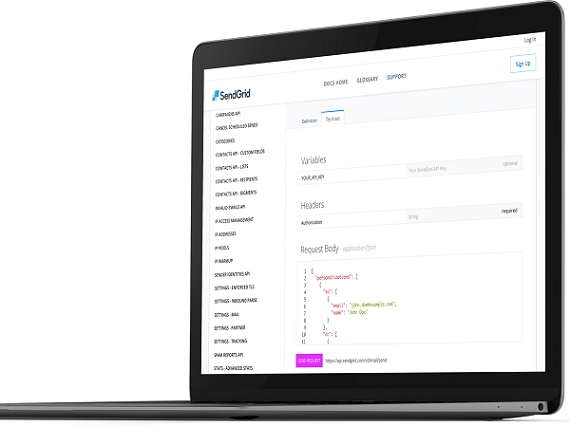How does Ginkgo Bioworks make money?
Ginkgo makes the majority of its money from the sale of its end-to-end COVID-19 testing services
Read more...
Email is one of those things that, despite a lot of people wanting to kill it, will never actually go away. It's a part of us now.
Just look at the statistics. According to The Inbox Report 2017, over 4 in 5 Americans checked their emails at least once a day, but it's not just among individuals where email has become entrenched; it has become equally as important for businesses to communicate with their customers. In 2017, the total number of business and consumer emails sent and received per day was expected to reach 269 billion, and that number projected to grow to 319.6 billion by the end of 2021, according to the Email Statistics Report from the Radicati Group.
That presents a real opportunity for e-mail delivery platform SendGrid. The company, which went public in October, is a platform for transactional and marketing email, essentially making it easy for companies to send out mass emails to their users.
Here's how the company describes what it does:
"SendGrid is a cloud-based SMTP provider that acts as an email delivery engine, allowing you to send email without the cost and complexity of maintaining your own email servers. SendGrid manages the technical details of email delivery, like infrastructure scaling, ISP outreach, reputation monitoring, and real-time analytics."
It offer customers three services: Email API; Marketing Campaigns; and Expert Services.
Its Email API service allows businesses to reliably send thousands or billions of emails, while SendGrid's Marketing Campaigns service allows marketers to upload and manage customer contact lists, create and test email templates. Its Expert Services help businesses optimize their email delivery.
SendGrid makes its money through plans that are based on a customer's specific needs, based on how many emails they need to send a month, as well as how many contacts they need to store.
Through SendGrid's pricing, businesses can choose from three different plans: Essentials, Pro and Premiere.
SendGrid does offer a free trial, which allows to businesses to send up to 40,000 emails for 30 days and 100 emails a day free forever. Clients can also store up to 2,000 contacts for free within Marketing Campaigns.
In the first six months of 2017, SendGrid saw $51.8 million in revenue, up 43 percent from the same period in 2016. In all of 2016, the company did $79.9 million, up 36 percent from $58.5 million in 2015.
Founded in 2009, the company now has over 58,000 paying customers, such as Spotify, Uber, Glassdoor, Yelp and Airbnb use SendGrid, which use it to send more than 35 billion total emails every month.
(Image source: sendgrid.com)
Ginkgo makes the majority of its money from the sale of its end-to-end COVID-19 testing services
Read more...GE Healthcare, which went public after spinning-off, makes most of its revenue from imaging products
Read more...The company makes most of its money through the sale of its Health Monitoring System
Read more...Startup/Business
Joined Vator on
SendGrid's cloud-based email infrastructure relieves businesses of the cost and complexity of maintaining custom email systems. SendGrid provides reliable delivery, scalability and real-time analytics along with flexible APIs that make custom integration a breeze.



